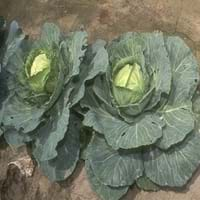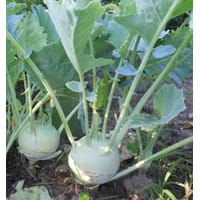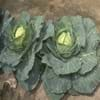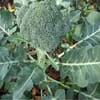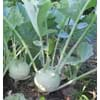Life Span
Annual
Annual or Biennial
Origin
Southern Europe, Western Europe, Mediterranean
Western Europe
Habitat
Swamps
agricultural areas, gardens, Wet ground
USDA Hardiness Zone
Not Available
1-6
Sunset Zone
A1, A2, A3, H1, H2, 1a, 1b, 2a, 2b, 3a, 3b, 4, 5, 6, 7, 8, 9, 10, 11, 12, 13, 14, 15, 16, 17, 18, 19, 20, 21, 22, 23, 24
A1, A2, A3, H1, H2, 1a, 1b, 2a, 2b, 3a, 3b, 4, 5, 6, 7, 8, 9, 10, 11, 12, 13, 14, 15, 16, 17, 18, 19, 20, 21, 22, 23, 24
Habit
Rosette/Stemless
Upright/Erect
Flower Color
Yellow
Not Available
Flower Color Modifier
Bicolor
Bicolor
Fruit Color
Not Available
Not Available
Leaf Color in Spring
Green
Green, Light Green
Leaf Color in Summer
Light Green
Green, Purple
Leaf Color in Fall
Light Green
Green, Purple
Leaf Color in Winter
Light Green
Green, Purple
Leaf Shape
Heart-shaped
Oval
Plant Season
Spring, Summer, Fall, Winter
Not Available
Sunlight
Full Sun, Partial Sun
Full Sun, Partial Sun
Type of Soil
Loam, Sand
Loam, Sand
The pH of Soil
Acidic, Neutral
Neutral
Soil Drainage
Well drained
Well drained
Bloom Time
Spring, Late Spring, Early Summer
Not Available
Tolerances
Drought
Drought
Where to Plant?
Container, Ground, Pot
Container, Ground
How to Plant?
Seedlings, Transplanting
Seedlings
Plant Maintenance
Medium
Medium
Watering Requirements
Keep the ground moist but not water-logged, Never Over-water, Requires regular watering
Keep ground moist, Use Mulches to help prevent water loss during hot and windy weather
In Summer
Lots of watering
Lots of watering
In Spring
Moderate
Moderate
In Winter
Average Water
Average Water
Soil pH
Acidic, Neutral
Neutral
Soil Type
Loam, Sand
Loam, Sand
Soil Drainage Capacity
Well drained
Well drained
Sun Exposure
Full Sun, Partial Sun
Full Sun, Partial Sun
Pruning
Remove dead leaves
No pruning needed in the early stages, Remove dead leaves
Fertilizers
All-Purpose Liquid Fertilizer
organic fertlizers, Potassium
Pests and Diseases
Red blotch
Alternaria Leaf Spot, Aphids, Cabbage looper, Downy mildew, Leaf spot, Mites, Red blotch
Plant Tolerance
Drought
Frost, Shallow soil
Flower Petal Number
Single
Single
Fragrant Bark/Stem
No
Yes
Foliage Texture
Bold
Bold
Foliage Sheen
Matte
Matte
Attracts
Beetles, Moths
Aphids, Beetles, Flying insects
Allergy
Food Allergy
Digestive Problems, sneezing, Swelling in the face
Aesthetic Uses
Not Used For Aesthetic Purpose
Not Used For Aesthetic Purpose
Beauty Benefits
Not Available
For treating wrinkles, Weightloss
Environmental Uses
Air purification
Food for animals, No fertilizer, pesticides, or herbicides needed
Medicinal Uses
Arthritis, Asthma, Eczema, Eye Problems, Headache, Heart problems, Jaundice, Muscle Pain, Skin Disorders, Stomach pain, Treatment of ulcers
Anemia, Diabetes, Digestion problems, Increase fiber amount, Kidney Stones, Minerals, Weight loss
Part of Plant Used
Whole plant
Leaves, Stem
Other Uses
Economic Purpose, Employed in herbal medicine
Can be made into a herbal tea, Used As Food, Used for its medicinal properties
Used As Indoor Plant
No
No
Used As Outdoor Plant
Yes
Yes
Garden Design
Bedding Plant, Container, Edible, Herb / Vegetable
Edible, Herb / Vegetable
Botanical Name
BRASSICA oleracea 'Arrowhead'( Capitata Group)
BRASSICA oleracea 'Dyna'( Gongylodes Group)
Common Name
Arrowhead Cabbage, Cabbage
Kohlrabi
In Spanish
repollo
Brassica oleracea gongyloides
In Portuguese
repolho
Kohlrabi
In Polish
kapusta
Kalarepa
In Latin
brassica
Kohlrabi
Phylum
Anthophyta
Magnoliophyta
Class
Magnoliopsida
Magnoliopsida
Order
Brassicales
Capparales
Family
Brassicaceae
Brassicaceae
Genus
Caulanthus
Brassica
Clade
Angiosperms, Eudicots, Rosids
Not Available
Tribe
Not Available
Not Available
Subfamily
Not Available
Not Available
Number of Species
Not Available
Importance of Cabbage and Kohlrabi
Want to have the most appropriate plant for your garden? You might want to know the importance of Cabbage and Kohlrabi. Basically, these two plants vary in many aspects. Compare Cabbage and Kohlrabi as they differ in many characteristics such as their life, care, benefits, facts, etc. Every gardener must at least have the slightest clue about the plants he wants to plant in his garden. Compare their benefits, which differ in many ways like facts and uses. The medicinal use of Cabbage is Arthritis, Asthma, Eczema, Eye Problems, Headache, Heart problems, Jaundice, Muscle Pain, Skin Disorders, Stomach pain and Treatment of ulcers whereas of Kohlrabi is Anemia, Diabetes, Digestion problems, Increase fiber amount, Kidney Stones, Minerals and Weight loss. Cabbage has beauty benefits as follows: Not Available while Kohlrabi has beauty benefits as follows: Not Available.
Compare Facts of Cabbage vs Kohlrabi
How to choose the best garden plant for your garden depending upon its facts? Here garden plant comparison will help you to solve this query. Compare the facts of Cabbage vs Kohlrabi and know which one to choose. As garden plants have benefits and other uses, allergy is also a major drawback of plants for some people. Allergic reactions of Cabbage are Food Allergy whereas of Kohlrabi have Digestive Problems, sneezing and Swelling in the face respectively. Having a fruit bearing plant in your garden can be a plus point of your garden. Cabbage has no showy fruits and Kohlrabi has no showy fruits. Also Cabbage is not flowering and Kohlrabi is not flowering . You can compare Cabbage and Kohlrabi facts and facts of other plants too.
